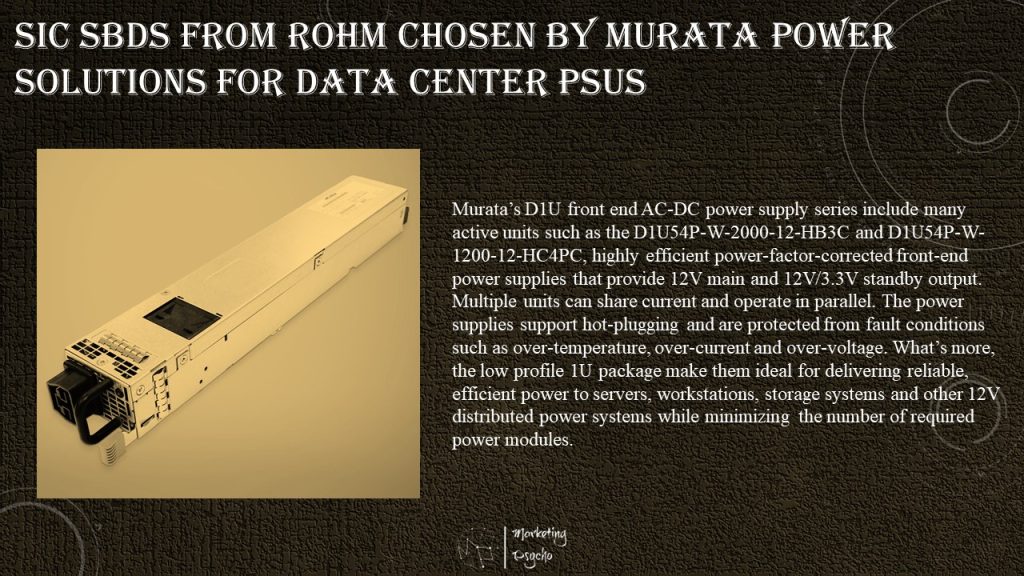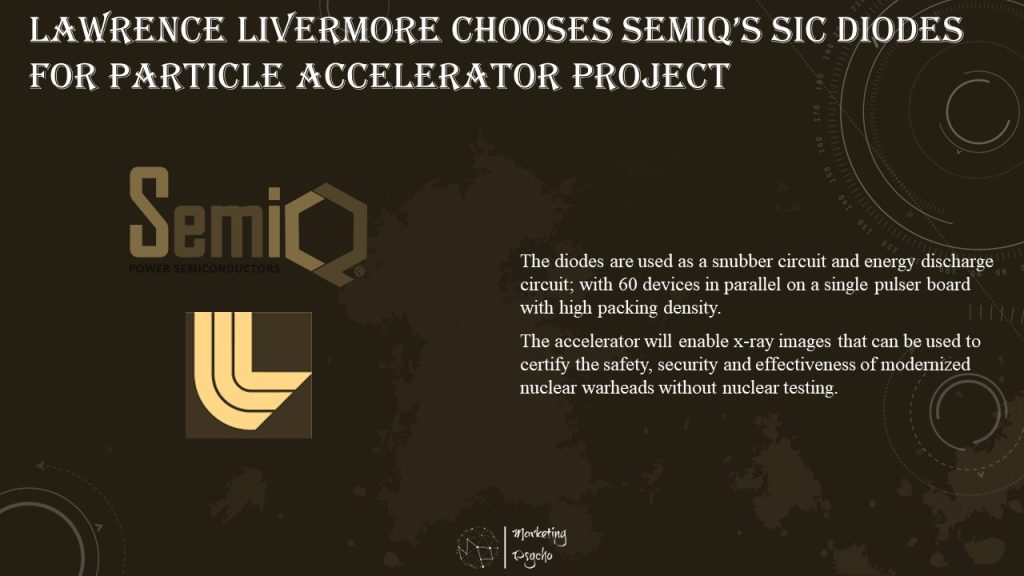Power Semiconductors Weekly Vol. 105
Resonac to Use Virtual Reality for Product Development
Resonac Corporation has successfully applied virtual reality (VR) technology to the development of semiconductor materials. This is the first time that the VR technology has been implemented to develop semiconductor materials in Japan.
Molecular dynamics (MD) simulation is a powerful tool for R&D of semiconductor materials at the atomic scale. Resonac employs MD simulations to study interactions at the interface between different materials, such as the adsorption and adhesion of organic molecules on an inorganic substrate with thousands of atoms. However, their behaviours are hard to observe on a simple computer screen. As a result, even experts in computational science often perform only a statistical analysis. The analysis is not easy for non-experts to understand.
Six months ago, Resonac began exploring VR technology with head-mounted display for analyzing the behaviour of molecules at interfaces in three-dimensions. The technology visualizes “the atomic and molecular world” of 0.1 nm, one ten-billionth of a meter, in front of the eyes, allowing to place engineers at the same scale. Resonac can observe the molecular behaviour at the substrate-molecule interface while intuitively handling “molecules”.
Resonac also found that the VR technology is helpful for non-experts to understand the behaviours, such as how atoms in a substrate bond with molecular chains of organic molecules. The VR technology, thus, facilitates communication between computational science and materials development experts, accelerating R&D activities.
Resonac’s first application of VR technology is in “analyzing the mechanisms of interaction between an inorganic substrate and organic molecules” for semiconductor and electronic materials, such as CMP slurries (polishing materials).
Dr. Yoshishige Okuno, Head of Research Center for Computational Science and Informatics, Resonac Corporation, said “VR technology greatly supports our R&D based on computational molecular-design. It leverages our advanced computational science technology to help more in-depth analysis and discovery of new materials. We would like to firstly extend the VR throughout the company, and to secondly elevate it to an internal infrastructure. We will fully utilize computational science and simulations to accelerate our research and development.”
SiC SBDs from ROHM Chosen by Murata Power Solutions for Data Center PSUs
ROHM announced that Murata Power Solutions is using its high performance silicon carbide (SiC) Schottky Barrier Diodes (SBD) to increase performance and reduce the size of Power Supply Units (PSUs) for data center applications. ROHM’s SiC SBDs, SCS308AH feature high surge resistance and short recovery time, enabling high-speed switching.

Murata’s D1U front end AC-DC power supply series include many active units such as the D1U54P-W-2000-12-HB3C and D1U54P-W-1200-12-HC4PC, highly efficient power-factor-corrected front-end power supplies that provide 12V main and 12V/3.3V standby output. Multiple units can share current and operate in parallel. The power supplies support hot-plugging and are protected from fault conditions such as over-temperature, over-current and over-voltage. What’s more, the low profile 1U package make them ideal for delivering reliable, efficient power to servers, workstations, storage systems and other 12V distributed power systems while minimizing the number of required power modules.
- Dr. Longcheng Tan, Senior Electrical Engineer and project leader, Murata Power Solutions.
By moving to SiC devices, we are able to develop power supplies with higher efficiency and higher power density. We can push the switching frequency of SiC devices higher to reduce the volume of passive components and heatsinks. Murata Group has a special procurement department for evaluating different SiC device vendors and their products. ROHM was chosen, mainly because their products are reliable. Samples were also available for prototyping, and ROHM provides prompt support. Their performance of the SBDs is excellent and we are now in mass production with the D1U power supplies. Murata is also using ROHM’s SiC MOSFETs in 3-phase inverter development projects, and the performance of those SiC MOSFETs are satisfying.
- Jay Barrus, President, ROHM Semiconductor U.S.A.,LLC
We are excited to help Murata Power Solutions, a Murata Manufacturing Group company that leads the industry in the field of industrial equipment including power supply systems. We are the leading company in SiC power semiconductors and have achieved a significant technological lead in this field along with the provision of power solutions combined with gate driver ICs. Together with Murata Power Solutions, we want to further improve the energy efficiency of power supply systems by using the full potential of SiC technology for industrial and data infrastructure.
ROHM has been a leader in SiC device technology and products since it began the world’s first mass production of SiC MOSFETs. ROHM’s latest 3rd generation of SiC SBDs, which have been adopted by Murata Power Solutions, offer greater surge current capability while further reducing the industry’s smallest forward voltage of its 2nd generation SBDs. The total capacitive charge (Qc) of ROHM’s SiC SBDs is small, reducing switching loss while enabling high-speed switching operation. In addition, unlike Si-based fast-recovery diodes where the trr (reverse recovery time) increases along with temperature, ROHM’s SiC devices maintain constant characteristics. Also, ROHM’s SiC SBDs allow manufacturers to reduce the size of industrial equipment and consumer electronics, making them ideal for use inpower-factor correction circuits and inverters.
onsemi to Integrate its SiC Technology in BMW Group’s Next-Generation EVs
onsemi announced a long-term supply agreement (LTSA) with BMW AG (BMW) for onsemi’s EliteSiC technology in the German premium car manufacturer’s electric drivetrains for 400 V DC Bus. onsemi’s latest EliteSiC 750 V M3 die is used in a full bridge power module delivering several hundred kWs of power.
The companies’ strategic collaboration during the development and integration of the electric drivetrain enabled onsemi to provide differentiated and application-specific die solutions, including optimized size and layout as well as high performance and reliability. Enhanced electrical and mechanical characteristics produce high efficiency and lower overall losses while delivering the highest system-level performance.
“With maximum range being a primary consideration for purchasing an EV, onsemi’s system approach for optimized performance across all of BMW’s electric vehicles provides a key competitive advantage,” said Asif Jakwani, senior vice president and general manager, Advanced Power Division, Power Solutions Group, onsemi. “In addition, we are able to support the rapidly increasing demand for BMW’s premium EVs by continuously ramping all production steps of our robust, vertically integrated SiC supply chain.”
With decades of expertise in manufacturing power components for automotive applications, onsemi has developed differentiated intelligent power technologies that deliver industry-leading electric drivetrain solutions. This includes exceptional packaging technology as well as an evolutionary path from planar to trench cell structures in all voltages delivering the highest level of reliability required for automotive EV applications.
Lawrence Livermore Chooses SemiQ’s SiC Diodes for Particle Accelerator Project
SemiQ Inc of Lake Forest, CA, USA – which designs, develops and manufactures silicon carbide (SiC) power semiconductors and 150mm SiC epitaxial wafers for high-frequency, high-temperature and high-efficiency power semiconductor devices – announced that Lawrence Livermore National Laboratory (LLNL) has chosen it to supply SiC diodes for an ongoing particle accelerator project.

SemiQ developed its top-side solderable 1200V 10A silicon carbide diode in a SMC (surface-mount component) package to withstand continuous high-current-pulse operation at 15 times rated current. The diodes are used as a snubber circuit and energy discharge circuit; with 60 devices in parallel on a single pulser board with high packing density.
The accelerator will enable x-ray images that can be used to certify the safety, security and effectiveness of modernized nuclear warheads without nuclear testing.
Groundbreaking Ceremony Held for GWM Subsidiary’s Semiconductor Module Packaging & Testing Project
Great Wall Motor (GWM) subsidiary Wuxi Xindong Semiconductor Technology Co., Ltd. held a groundbreaking ceremony on February 26, 2023 for its “third-generation semiconductor module packaging and testing” project. This marks a crucial step for Xindong Semiconductor towards the industrialization of the project.
As the core components of new energy vehicles, power devices account for about 30%-50% of the value of electric motor controllers. Xindong Semiconductor, as a member of GWM’s Forest Ecosystem, will complete the power semiconductor industry chain, provide core technologies and product support for GWM’s new energy vehicle business, guarantee supply security, and grasp the cost control ability of electrification-related core value chain.
GWM announced last October that it planned to use its own funds with Wei Jianjun (chairman of GWM) and Wensheng Technology (Tianjin) Co., Ltd. to jointly establish Xindong Semiconductor, with a registered capital of 50 million yuan ($7.177 million). Incorporated on November 1, 2022, Xindong Semiconductor features a business scope that includes the manufacturing and sales of power electronic components, IC chips, and discrete semiconductor devices.
On February 26, 2023, Wuxi Xindong Semiconductor Technology Co., Ltd., a subsidiary of Great Wall Motor (GWM), held a groundbreaking ceremony for its “third-generation semiconductor module packaging and testing” project. This marks a crucial step for Xindong Semiconductor towards the industrialization of the project, which will provide core technologies and product support for GWM’s new energy vehicle business.
The layout of power semiconductors and the vertical integration of the industrial chain will be a major advantage GWM boasts in the NEV field. Xindong Semiconductor aims to develop third-generation power semiconductor SiC modules and application solutions, achieve the replacement with domestically built components through in-house R&D, and efficiently integrate upstream and downstream resources.
Vincotech Webinar: Embedded Designs Drive Tomorrow’s Solutions
Vincotech’s solutions deliver high functional integration and power density, enabling the design of cost-effective embedded systems. Their high level of integration lets system engineers take advantage of a proven combination of power components and gate drive circuits to develop more compact final products. And because Vincotech’s modules integrate multiple functionalities into a single package, they cut the development of new drives, dramatically reducing costs at a system level and time to market.
Drawing on Vincotech’s vast experience and know-how in developing power modules with power factor correction and a motor inverter, Vincotech has developed power-efficient, cost-effective solutions for motor drive specifically tailored to the needs of today’s embedded drive systems.
Designed around key constraints identified by Vincotech’s customers, the modules offer an optimal solution combining multiple innovative technologies that all aim to increase the degree of integration:
- Thick-film technology for intelligent power modules
- Power-integrated modules with integrated power factor correction circuits
- Thin ceramic for improved thermal performance
At the same time, Vincotech has been spearheading the trend toward the integration of other key features such as shunt systems, on-board capacitors and interleaved power factor correction topology that support the complex electrical and thermal design of motor drives.
Key Take-Aways:
- Learn what the key constraints are for embedded systems in motion control
- Discover how to fulfil the demand for higher efficiency and reduced space occupancy with highly integrated power modules
- Explore Vincotech’s wide offering of power module topologies for embedded drives
- Date: March 15, 2023
- Time: 1 PM CET
Subscribe to Power Semiconductors Weekly and watch it on YouTube every Tuesday.
If you prefer a monthly update about the world of power semiconductors delivered to your e-mail address, please, subscribe to Marketing Psycho Power Semiconductors newsletter
